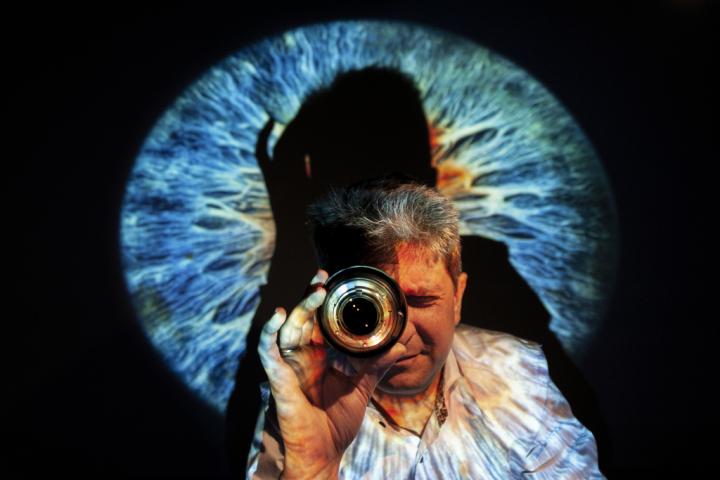
Credit: IPC PAS, Grzegorz Krzyzewski
If the eyes are the mirror of the soul, then thanks to the translucent corneas, we can look deep into that soul. And thanks to the work of scientists from the IPC PAS we can look into the depths of the cornea itself. And that without touching it! All thanks to the introduction of an innovative method of holographic optical tomography.
“Our idea was to spoil the coherent laser beam illuminating the cornea, so we could significantly extend the exposure time without endangering the delicate retina. At the same time, it allows us to maintain a high value of light power, which allows us to see even a very weak light backscattered from the cornea,” explains professor Wojtkowski. Additionally, the volumetric nature of the collected data allowed for the optical “flattening” of the cornea curvature and obtaining exceptionally sharp images of all its layers across the entire section. This is not an easy task, because the transparency of the cornea, although it allows to look inside the eye, does not facilitate the examination of the cornea itself.
The old methods required contact of the measuring device with the eye, and thus anaesthesia of the eyeball was mandatory, and the measurement itself – long-lasting. However, even the newer ones, using the OCT (optical coherence tomography), have limitations due to not fast enough image collection, which, when examining an unanaesthetized eye, makes the obtained image blurry due to micro-movement of the eyeball.
The breakthrough came with super-fast cameras recording tens of thousands of frames per second, which made it possible to record images at lightning speed. The problem in standard OCT was the resolution and artifacts resulting from the fact that the cornea is curved and scanning it, the laser beam is arranged slightly differently in each part. This is where the scientists from the IPC PAS come in. Their method, known as holographic OCT tomography, allows them to capture the cornea in a fraction of a second and to record its entire depth in an extremely high, unprecedented resolution. The patient will not even have time to blink, and his cornea is already imaged, with the accuracy so high that even single cells can be viewed. And if she or he even blinks (well, let’s say moves the eye), the computer will compensate for this movement, still giving a sharp image.
– Moreover our new device has no moving parts, and thanks to the phase modulation of the laser beam we can use more power without harming deeper tissues of the eye,” explains professor Wojtkowski.
The method developed by scientists from the International Centre for Translational Eye Research at the IPC PAS has a chance to revolutionize the diagnosis of eye diseases, not only corneas, giving doctors a tool to examine patients quickly and painlessly. Thanks to the fact that it also makes visible what is invisible in an ordinary slit lamp and is equally non-invasive, patients will gain comfort and ophthalmologists will gain incomparably more information.
###
The work was financed by funds from Horizon 2020 Framework (666295), National Science Centre (2016/22/A/ST2/00313) and Ministry of Science and Higher Education (2016-2019).
The Institute of Physical Chemistry of the Polish Academy of Sciences (http://www.
of physical chemistry and chemical physics. Scientific research is conducted in nine scientific departments. CHEMIPAN R&D Laboratories, operating as part of the Institute, implement, produce and commercialize specialist chemicals to be used, in particular,
in agriculture and pharmaceutical industry. The Institute publishes approximately 200 original research papers annually.
Media Contact
Maciej Wojtkowski
[email protected]
Related Journal Article
http://dx.




